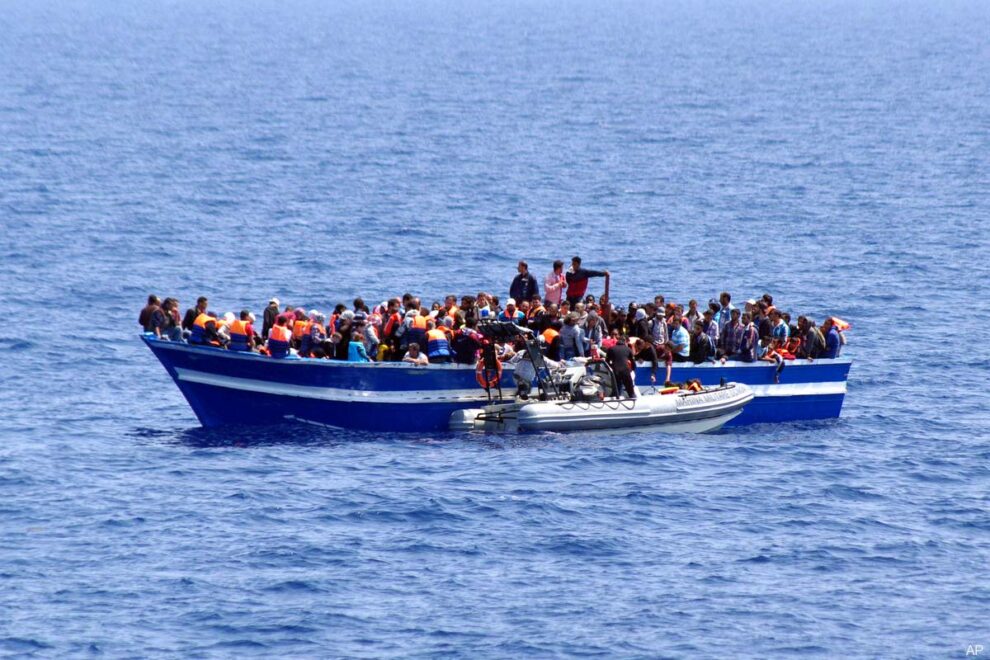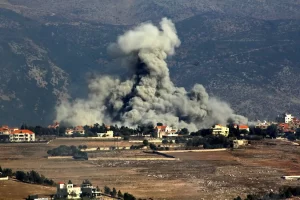After over a decade of conflict, Syria remains the world’s largest refugee crisis. Since 2011, more than 14 million Syrians have been forced to flee their homes in search of safety. More than 6.8 million Syrians remain internally displaced in their own country where 70 percent of the population is in need of humanitarian assistance and 90 percent of the population live below the poverty line. Approximately 5.5 million Syrian refugees live in the five countries neighboring Syria—Türkiye, Lebanon, Jordan, Iraq and Egypt. Germany is the largest non-neighboring host country with more than 850,000 Syrian refugees.
Here’s What You Need to Know:
1. When did the Syrian refugee crisis begin?
2. How are the Türkiye-Syria Earthquakes impacting Syrians?
3. Where do Syrian refugees live? Do all Syrian refugees live in refugee camps?
4. What are Syrian’s greatest challenges?
5. How are Syrian children impacted by this crisis?
6. What is the UN Refugee Agency doing to help Syrians?
When did the Syrian refugee crisis begin?
The Syrian refugee crisis began in March 2011 as a result of a violent government crackdown on public demonstrations in support of teenagers who were arrested for anti-government graffiti in the southern town of Daraa. The arrests sparked public demonstrations throughout Syria which were violently suppressed by government security forces. The conflict quickly escalated and the country descended into a civil war that forced millions of Syrian families to flee their homes. Twelve years later, the conflict is ongoing with Syrians continuing to pay the price—more than 15.3 million people in Syria are in need of humanitarian assistance, accounting for 70 percent of the population.
How are the Türkiye-Syria Earthquakes impacting Syrians?
On February 6, 2023, two powerful earthquakes struck south-eastern Türkiye and northern Syria, claiming thousands of lives and causing untold destruction to homes and infrastructure across the region. This is a crisis on top of existing crises already impacting internally displaced Syrians and Syrian refugees.
In Türkiye, the heavily impacted areas are regions where Syrian refugees live in high numbers. Syrian refugees were already vulnerable, living with protection risks and economic insecurity. For people inside Syria, the earthquake has only brought on more misery and pain and catapulted some of the most in need communities in the country into utter desperation.
As of March 2023, the earthquake has claimed 54,000 lives in the two countries and caused massive destruction to an area where more than 23 million people live. Widespread destruction of buildings and homes has displaced 150,000 households across Syria and 900,000 people are in urgent need of shelter.
The immediate impact of the earthquake has been devastating, but the full extent of the damage is yet to be seen. The long-term impacts of the earthquakes pose serious challenges for Syrians and will require a robust response on multiple fronts.
Where do Syrian refugees live? Do all Syrian refugees live in refugee camps?
Syrian refugees have sought asylum in more than 130 countries, but the vast majority live in neighboring countries within the region, such as Türkiye, Lebanon, Jordan, Iraq and Egypt. Türkiye alone hosts the largest population of Syrian refugees: 3.6 million.
Approximately 92 percent of refugees who have fled to neighboring countries live in rural and urban settings, with only roughly five percent living in refugee camps. However, living outside refugee camps does not necessarily mean success or stability. More than 70 percent of Syrian refugees are living in poverty, with limited access to basic services, education or job opportunities and few prospects of returning home.
What are Syrians’ greatest challenges?
Protracted displacement, economic decline in host countries due to COVID-19, the war in Ukraine, global inflation and the earthquakes that struck south-eastern Türkiye and northern Syria are some of the biggest challenges Syrians currently face.
Poverty and unemployment are widespread within Syria, with over 90 percent of the population in Syria living below the poverty line. High levels of inflation and a record increase in prices of more than 800 percent in the last two years are making basic goods and services unaffordable for many people. An estimated 12.1 million people are food insecure as a result of the economic crisis.
The situation for Syrian refugees living in neighboring host countries has deteriorated as well. Economic challenges in neighboring countries like Lebanon have pushed Syrians in the country into poverty with more than 90 percent of Syrian refugees reliant on humanitarian assistance to survive. In Jordan, nine out of ten refugee households reported being in debt. Ninety percent of Syrian refugees living in Türkiye cannot fully cover their monthly expenses or basic needs.
Millions of refugees have lost their livelihoods and are increasingly unable to meet their basic needs – including accessing clean water, electricity, food, medicine and paying rent. The economic downturn has also exposed them to multiple protection risks, such as child labor, gender-based violence, early marriage and other forms of exploitation.
Refugees living in refugee camps or camp-like situations also face an increased risk of COVID-19 infection. Overcrowded conditions in refugee camps make it difficult to practice public health measures like frequent handwashing and physical distancing.
How are Syrian children impacted by this crisis?
Twelve years of crisis have had a profound impact on Syrian children. They have been exposed to violence and indiscriminate attacks, losing their loved ones, their homes, their possessions and everything they once knew. They have grown up knowing nothing but the crisis. Today, over 47 percent of Syrian refugees in the region are under 18 years old and more than a third of them do not have access to education. In Syria, more than two million children are out of school and 1.6 million children are at risk of dropping out.
Children’s rights during the crisis are undermined on a daily basis. An increasing number of Syrian children have fallen victim to child labor, with cases in Lebanon almost doubling in just one year.
What is the UN Refugee Agency doing to help Syrians?
The UN Refugee Agency has been on the ground since the start of the crisis providing shelter, lifesaving supplies, clean water, hot meals and medical care to families who have been forced to flee their homes. UNHCR has also helped repair civilian infrastructure – including homes, school facilities and recreation centers, supported educational activities for children and provided psycho-social support.
During the pandemic, UNHCR ramped up efforts to confront and contain the spread of COVID-19 through the provision of protective equipment to hospitals and health clinics, the distribution of medicine, and the construction of quarantine areas and hygiene facilities. It has also supported close to 800,000 additional Syrian refugees with emergency cash assistance to help them meet their most basic and urgent needs.
UNHCR and humanitarian partners are responding to the Türkiye-Syria Earthquakes by stepping up their assistance in the two countries, something that requires greater and urgent international support. Since the earthquake, UNHCR alone has delivered tens of thousands of tents, beds, mattresses, thermal blankets and other desperately needed support.
Help protect Syrian refugees…
Monthly giving is the most convenient, effective and efficient way you can help people fleeing conflict. Start making a lifesaving difference today. Please become USA for UNHCR’s newest monthly donor.
Source: UNHCR






































